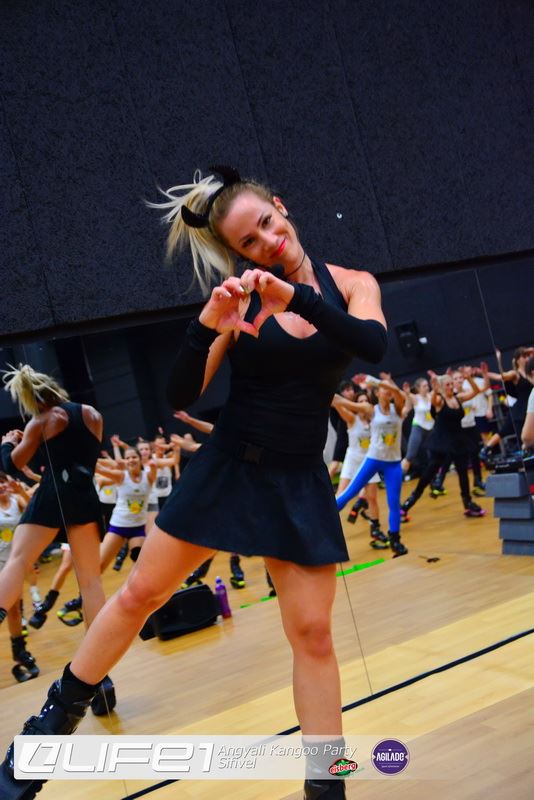About Kangoo Jumps

The beginning of the journey:
1994: Canadian-born Gregory Lektham has developed a special shoe-set for rehabilitation purposes which became the basis of the popular Kangoo Jumps. The device was designed for patients who were unable to exercise due to their injuries, knee and joint disorders. By reducing the force of impact by more than 80%, Kangoo Jumps have given many people the chance to do sports again on a regular basis. The new product was launched at the SISEL Sports Fair in Paris the same year, in 1994.
Denis Neville from Switzerland patented the idea of Kangoo Jumps. Following his death in 2015, his daughter Mika Neville became the owner and main distributor of the Kangoo Jumps brand.
In 1995, the scientific community began to take notice of this new sports equipment and started to study the physiological effects of Kangoo Jumps. The first full-scale study was published by Lismore University in Australia, and the results were later confirmed by a research at Lusanne University in Switzerland. Albert C. Carter, among others, has been involved in the studies, and experts from NASA have also taken part in the research. The results of the study confirmed the positive effects of the use of Kangoo Jumps shoes and methodology.
Kangoo Jumps in Hungary:
In 2002, Ádám Hornyák (Ádee) introduced Kangoo Jumps to group classes in Hungary. The new form of movement with Kangoo Jumps became known and popular due to Ádám’s professional work. Ádám died in a tragic accident in September 2008.
Tímea Sifter (Sifi) has carried on the legacy of Kangoo Jumps and made efforts with heart and soul, to keep this form of exercise popular. Kangoo jumps has gained an enduring popularity. It's one of the most popular group classes in several gyms nationwide, where Sifi's professionally trained instructors keep hundreds of people moving each week.
Today, Kangoo Jumps became one of the most important shows of different fitness events, with thousands of participants enjoying the inimitable Kangoo experience.

Benefits of Kangoo Jumps:
1. It provides an increased G-force (gravitational load), which strengthens the musculoskeletal systems.
2. It protects the joints from the chronic fatigue delivered by exercising on hard surfaces.
3. It helps manage body composition and improves muscle-to-fat ratio.
4. It increases capacity for respiration.
5. It circulates more oxygen to the tissues.
6. It establishes a better equilibrium between the oxygen required by the tissues and the oxygen made available.
7. It aids lymphatic circulation by stimulating the millions of one-way valves in the lymphatic system.
8. It tends to reduce the height to which the arterial pressures rise during exertion.
9. It lessens the time during which blood pressure remains abnormal after severe activity.
10. It assists in the rehabilitation of a heart problem.
11. It increases the functional activity of the red bone marrow in the production of red blood cells.
12. It improves resting metabolic rate so that more calories are burned for hours after exercise.
13. It causes muscles to perform work in moving fluids through the body to lighten the heart's load.
14. It decreases the volume of blood pooling in the veins of the cardiovascular system preventing chronic edema.
15. It encourages collateral circulation by increasing the capillary count in the muscles and decreasing the distance between the capillaries and the target cells.
16. It strengthens the heart and other muscles in the body so that they work more efficiently.
17. It allows the resting heart to beat less often.
18. It lowers circulating cholesterol and triglyceride levels.
19. It lowers low-density lipoprotein (bad) and increases high-density lipoprotein (good) within the blood holding off the incidence of coronary artery disease.
20. It promotes tissue repair.
21. It increases the mitochondria count within the muscle cells, essential for endurance.
22. It adds to the alkaline reserve of the body, which may be of significance in an emergency requiring prolonged effort.
23. It improves coordination between the propreoceptors in the joints, the transmission of nerve impulses to and from the brain, transmission of nerve impulses and responsiveness of the muscle fibers.
24. It improves the brain's responsiveness to the vestibular apparatus within the inner ear, thus improving balance.
25. It offers relief from neck and back pains, headaches, and other pain caused by lack of exercise.
26. It enhances digestion and elimination processes.
27. It allows for deeper and easier relaxation and sleep.
28. It results in better mental performance, with keener learning processes.
29. It curtails fatigue and menstrual discomfort for women.
30. It minimizes the number of colds, allergies, digestive disturbances, and abdominal problems.
31. It tends to slow down atrophy in the aging process.
32. It is an effective modality by which the user gains a sense of control and an improved self-image.
33. It is enjoyable!
